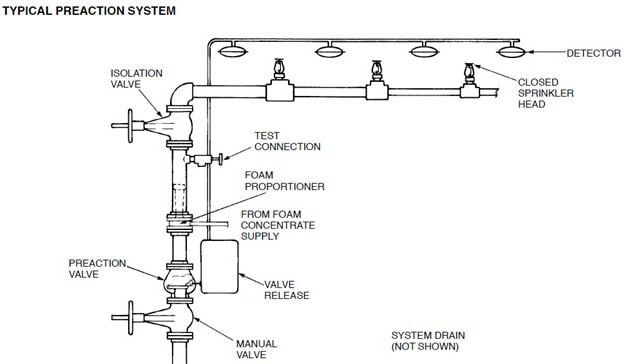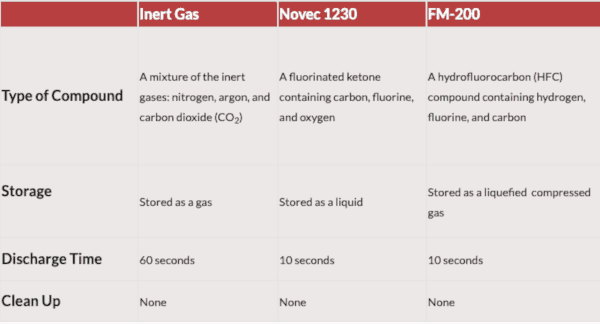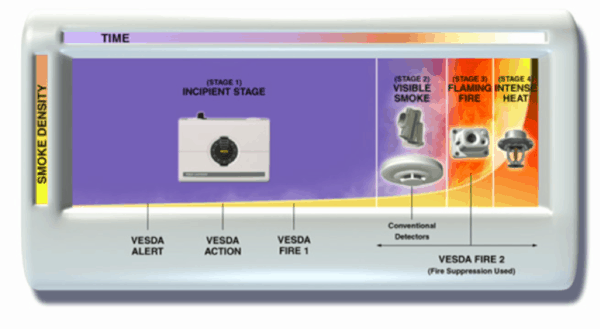NFPA guidance on protecting artwork and high-value collections
The Royal Alcazar of Madrid, originally a ninth-century fortress, evolved into a palace between 1530 and 1734. Over time, the Spanish royalty that occupied it amassed a large collection of artwork. But on Dec. 24, 1734, a fire broke out and destroyed the palace—and much of the art went up in flames. Palace residents fought valiantly to save what they could, but more than 500 paintings were lost including works by Da Vinci, Raphael, and Bosch, among others. In 2016, one of the paintings thought to have been lost in the fire was discovered: a depiction of King Philip III by famed artist Diego Velázquez.
Fast forward 258 years: In 1992, a nearly $45 million art collection was lost to fire in a private residence in Oakland, California. This fire, known as the Oakland Hills firestorm, killed or injured nearly 200 people, burned over 1,500 acres, and destroyed more than 3,000 homes. One of these was the home shared by art collectors Walter Nelson-Rees and James Coran. Their collection of 800 paintings included works by Bierstadt, Hill, Dixon, and other California artists from the 19th and 20th centuries.
And fires at the National Museum of Brazil and the Notre Dame Cathedral in Brazil claimed numerous artifacts and historical treasures in 2018 and this year, respectively.
If you are an art collector, run a museum, or you are an estate manager, how can you ensure that a high-value collection is protected from fire? Some individuals have turned to storing their collections in freeport facilities where they will be protected and looked after by a professional. But the intention of art is that it should be available to be viewed, admired, and enjoyed. For high-value collectors and private museums in particular, art belongs where residents and visitors can spend their time appreciating it.
Though there is no fire protection standard specifically for the protection of artwork and fine paintings, the most closely associated document is the National Fire Protection Association’s NFPA 232: Standard for the Protection of Records. Though this standard is generally associated with large public and commercial buildings that store records and archives, it has excellent guidance that can be applied to personal art and other high-value collections.
If you need components for a fire protection system, QRFS carries a wide selection of system components and accessories, including commercial and residential sprinkler heads, installation tools, fire extinguishers, heavy-duty head guards that protect sprinklers from accidental damage, Shutguns that quickly stop accidental sprinkler discharges, and more.
What are the fire risks to art collections?
The process of how to best protect valuable art pieces starts with an open and honest assessment of the risks to the items. There are seven factors to consider.
- Fire exposure from outside the building or neighboring area that could start a fire within the art-collection space.
- Fire potential within the structure, or inherent fire potential of the art itself.
- The potential impact of fire originating in the art area and its potential effect on the structure.
- Fire protection systems and the result their activation would have on the art collection.
- Potential threats to residents, visitors, and/or responding firefighters.
- The potential for arson.
A risk assessment will inform and guide the creation and implementation of an emergency action plan. This assessment can also help to determine the best types and levels of fire protection that may be required.

Step 1 to protecting artwork from fire: Have a plan
An important component is having an emergency plan wherever high-value collections are stored, viewed, or displayed. This guide informs all of the individuals living or working within the property on exactly what to do in case of a fire or another type of emergency. Each person will know his or her role, and how to perform it effectively.
Having an emergency action plan and understanding the actions in advance will enable the rapid response that is key to the life safety of a building’s occupants—and to the quick protection and salvage of valuable items and collections.
NFPA 232 directs readers to NFPA 1600: Standard on Continuity, Emergency, and Crisis Management for specifics on the implementation and application of an emergency action plan.
From the 2017 edition of NFPA 232
4.8 Emergency Planning
4.8.1 General. Emergency planning shall be performed.
4.8.1.1 Emergency plans shall be based on hazard identification and risk assessment in accordance with Section 5.3 of NFPA 1600 and ANSI/ARMA 5.
4.8.1.2 A strategy to eliminate hazards or mitigate the effects of hazards that cannot be eliminated shall be developed in accordance with Section 5.4 of NFPA 1600.
Select the right collection or museum fire protection system
NFPA 232 explains the potential use of three primary types of fire protection systems. These could be water-based fire sprinkler systems (NFPA 13), gaseous or clean agent systems (NFPA 2001, NFPA 12A), or water mist systems (NFPA 750). Each one of these options offers unique advantages and disadvantages.
NFPA 13 outlines four water-based fire sprinkler systems
There are four basic types of water-based fire sprinkler systems: wet, dry, pre-action, and deluge. Wet fire sprinkler systems have water throughout the piping at all times. When a fire occurs and elevates the sprinkler head temperature to its predetermined actuation temperature, the head opens and water is immediately expelled onto the fire.
Dry pipe systems look like wet systems but there is no water in the overhead piping. When a fire occurs and elevates the sprinkler head temperature to its predetermined actuation temperature, the head opens and all air (or nitrogen) is expelled out of the pipe. This loss of pressure causes a dry pipe valve closer to the water source to open, permitting water to enter the pipe and be discharged from the open sprinkler head(s).
A pre-action system works in conjunction with multiple detection devices and, like the dry system, has no water in the overhead piping. When a fire is detected via a heat, smoke, or flame detector, a signal is sent to a panel that tells the valve to unlock and allow water into the sprinkler piping. At this point, the system is identical to a wet system or a dry system—the second thing that must happen is the sprinkler head must reach its actuation temperature. When this happens, water is discharged onto the fire.

A deluge system is one in which the piping is usually dry and all of the sprinkler heads are always open. When a fire is detected, a signal is sent to open a valve which allows water to enter the system. At this point, water is discharged out of all of the heads over the entire area.
Though any of these fire sprinkler options will work to extinguish fires, the most desirable for high-value collections or museum fire protection systems is a pre-action system. Upon the first detection of fire, personnel can investigate and potentially extinguish a small blaze with a fire extinguisher or by other means—without sprinkler water hitting valuable items. Additionally, if the system piping is damaged or a sprinkler head is broken off, the system will not activate; it will merely send a signal indicating an issue with the system.
Wet pipe systems would function just as well in extinguishing a fire but since the water is always in the pipe, an accidental activation would be far more likely to cause water damage. Dry pipe systems also work well but are primarily used where freezing is a concern. This makes their use less applicable in a climate-controlled environment where valuable art is displayed. And deluge systems are typically only used in industrial settings or high-hazard areas like aircraft hangars, where jet fuel is present.
The primary fear of using water-based fire protection systems is the worry about water damage when there isn’t a fire. Though this is unlikely to occur, it is why pre-action systems are a preferred water-based method of protecting artwork. Nevertheless, it is important to remember that valuable items can often recover from water damage but they cannot come back from fire. And the same maxim, of course, applies to human life.
NFPA 2001 outlines the requirements for clean agent systems
Gaseous systems extinguish a fire by depleting the oxygen or through the disruption of the chemical chain reaction of combustion. These are often referred to as “clean agent systems” because they leave no residue and do not cause any damage to items within the activation space.
Chemicals used in these systems include inert gases (Inergen, Nitrogen, Argonite), Novec™ 123 Fire Protection Fluid, or FM-200 (heptafluoropropane gas). There are two types of systems that can be employed: total flooding or local application.
In a total flooding application, careful consideration must be given to the space or room where the system is to be installed. The room must be airtight with doors that automatically close. For the system to extinguish a fire effectively, the agent needs to be contained within the space and not permitted to float or drift freely.
In contrast, a local application system is intended to protect specific items. It is only effective for the “extinguishment of fires in flammable or combustible liquids, gases, and shallow solids, such as paint deposits, where the hazard is not enclosed or where the enclosure does not conform to the requirements of total flooding.”
These systems are attractive for art collections and museums, as they present no risk of damage to items or the space. But they require additional and potentially expensive measures to work properly. A total flooding clean agent system would be suitable for properties that house art and high-value collections in a large room that can be made airtight. Local application systems for individual pieces would likely not be aesthetically pleasing or practical to install.

Art collection and museum fire protection systems: NFPA 750 outlines requirements for water mist systems
Water mist systems are another type of water-based fire suppression. As the name suggests, and much like NFPA 13 sprinkler systems, water mist systems utilize water discharged from a head or heads to extinguish the fire. There are some major differences between fire sprinkler systems and water mist systems, however.
Water mist systems emit their suppressing agent in fine droplets. These tiny water droplets contribute to more rapid extinguishment, reduced water damage, and easier cleanup. Based on a needs analysis, this may be the most preferred method of fire suppression for the protection of art and other high-value collections.
Fire suppression system selection factors
When selecting the right type of active fire protection system, several factors must be considered. These include:
- The cost of system installation
- The maintenance costs
- The expense of system agents
- Their reliability
- Where the system will be used
- The potential damage upon activation
An NFPA 13 water-based fire sprinkler system is generally considered to be the most reliable, economical, and efficient option, and pre-action systems are the least likely to cause water damage among fire sprinkler options. An NFPA 2001 clean agent system will cause the least amount of damage of any system type, but it is required to be used within sealed spaces. An NFPA 750 water mist system can be used anywhere and has a lower level of damage than an NFPA 13 sprinkler system, but it is a more expensive choice.

Fire alarms provide the first level defense in protecting artwork
The best way to prevent fire damage is by early detection. A properly installed and maintained fire alarm system will quickly detect a fire and can automatically notify building occupants, the fire department, or onsite staff. Building occupants can evacuate while the fire department and trained staff implement the emergency action plan to protect life and property.
Early notification can result in the deactivation of a sprinkler system if it is discovered that there is actually no fire, or a small fire is quickly put out with a fire extinguisher—enabling the salvage of items that would have otherwise been damaged by fire or water.
Fire alarm detection devices consist of heat detectors, smoke detectors, and flame detectors. These can be utilized individually or in combination. Where fire suppression systems are installed, a fire alarm system is required. These systems can also automatically shut doors and activate the suppression system.
For arguably the most rapid response to a fire, new technology has spurred the use of VESDA aspirating smoke detector fire alarm systems. These systems constantly sample the air; when inconsistencies such as smoke are detected, the system immediately activates. Regardless of the type of fire alarm system used, it must be installed and maintained in accordance with NFPA 72: National Fire Alarm and Signaling Code.

Fire extinguisher use can prevent activation of the fire suppression system
Fire extinguishers should be located throughout the property. Extinguishers are given a letter classification based on the types of fire that they are intended to extinguish. Among other types, Class A fires are paper and wood products, Class B fires are flammable liquids, and Class C fires are those associated with energized electrical components.
The most appropriate version for art collections is a fire extinguisher bearing a Class A designation. NFPA 10: Standard for Portable Fire Extinguishers outlines the requirements for classification for the selection, use, and maintenance of fire extinguishers. Read our previous blog for detailed information on their number and placement: “When and Where Should Fire Extinguishers Be Installed? A Practical Guide for Building Owners.”
Inspection, testing, and maintenance of artwork collection and museum fire protection systems are critically important
For any system to be effective and to avoid the chance of errant discharges or system leaks, regular inspection, testing, and maintenance (ITM) must be performed. These actions include quarterly, semi-annual, and annual requirements that often must be performed by a professional who has experience working with a specific type of system.
Additionally, there may be weekly or monthly inspections that can be completed and recorded by building managers and staff. The ITM for all water-based systems is outlined in NFPA 25: Standard for the Inspection, Testing, and Maintenance of Water-Based Fire Protection Systems. Other systems, such as those covered by NFPA 2001, NFPA 750, NFPA 72, and NFPA 10, have ITM requirements within those individual documents.
From the 2017 edition of NFPA 232
4.8.6 Inspection, Testing, and Maintenance.
4.8.6.1 Where water-based fire protection systems protect records, they shall be inspected, tested, and maintained in accordance with NFPA 25.
4.8.6.2 Where other fire protection systems are installed, they shall be inspected, tested, and maintained, in accordance with the related installation or maintenance standard.
A recovery plan after a fire should include directions for salvage and the prevention of further damage
Outside of an emergency plan and a properly selected, installed, and maintained fire protection system, a recovery plan should also be in place. This plan is the last line of defense for the protection and salvage of priceless artwork and other high-value pieces. When fire prevention efforts and emergency response have been unsuccessful—after the fire protection system has activated and the fire is extinguished—then clean-up and recovery must begin.
The recovery plan should include clear guidance, down to the individual piece, on the priority and value of the collection and which piece should be prioritized to be salvaged over others. The plan should include a list of names, companies, and numbers for equipment suppliers, disaster recovery professionals, and conservators who specialize in the types of pieces involved. These individuals need to know in advance that they are part of the recovery team and may be called upon at a moment’s notice.
The recovery plan should identify the responsibilities of each person who is on staff and what their role transitions to in the recovery phase of a disaster. Finally, written arrangements should be outlined for the process of removing excess pieces of the collection and where they will be moved until the space is cleaned, repaired, and otherwise returned to normal. Annex C of NFPA 232 provides in-depth guidance on the requirements for the salvage of water-damaged materials.

Protecting high-value art collections and choosing museum fire protection systems: Breaking it down
For domestic estate managers or the managers of museums or private art collections, providing adequate fire protection is far more complex than having a few fire extinguishers on hand. If you are tasked with the protection of high-value collections, the key things to remember are:
- Have an emergency plan
- Implement and maintain fire protection systems
- Quickly implement the recovery plan
If you need components for a fire protection system, QRFS carries a wide selection of system components and accessories, including commercial and residential sprinkler heads, installation tools, fire extinguishers, heavy-duty head guards that protect sprinklers from accidental damage, Shutguns that quickly stop accidental sprinkler discharges, and so much more.
For more information about QRFS products, call us at +1 (888) 361-6662 or email support@qrfs.com.
This blog was originally posted at blog.qrfs.com. Check us out at Facebook.com/QuickResponseFireSupply or on Twitter @QuickResponseFS.



Good information, well explained, clear and easier to be comprehended, and lastly the elaboration is very straight forward. Thanks for the sharing.